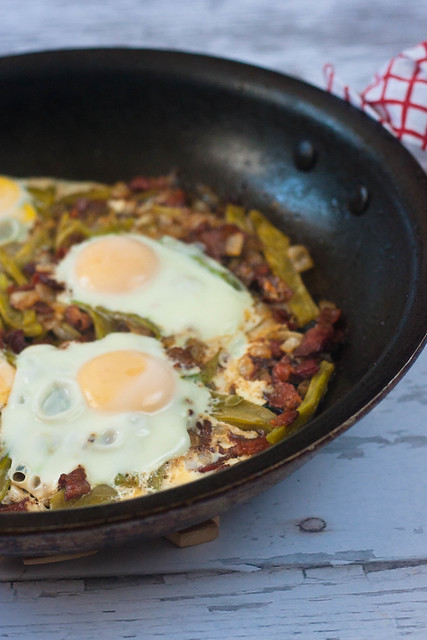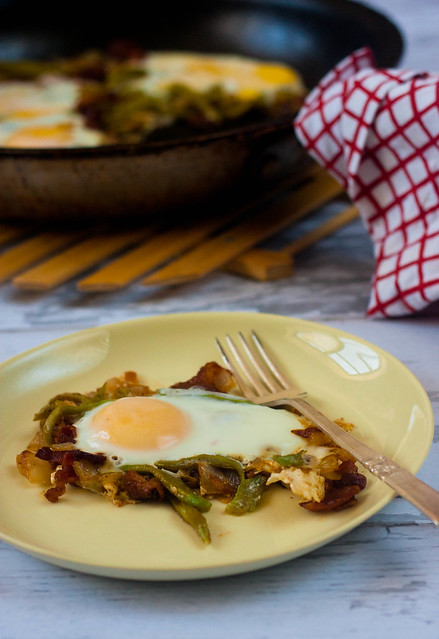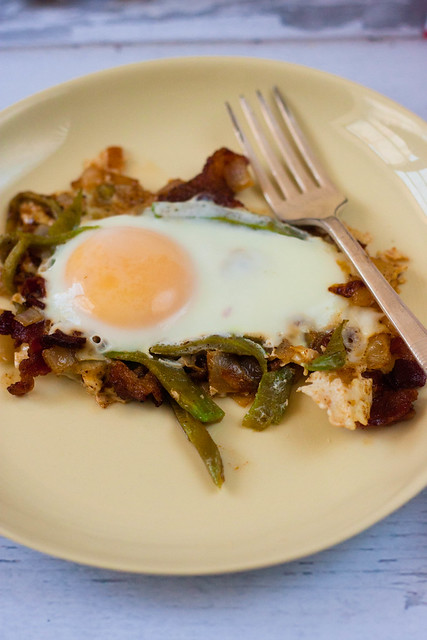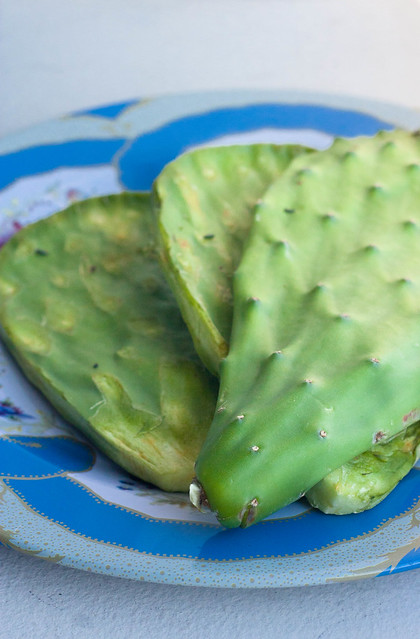Pima-Papago Cactus and Eggs
In my last post, we started talking about Spirit of the Harvest by Beverly Cox and Martin Jacobs, being reissued this fall. I have to say, it would be the perfect resource for a Thanksgiving meal, as the recipes are focused around using traditional Native American ingredients like cornmeal, pumpkins, beans, meats native to North America and flavors that are very much of the season. It might also be a way to celebrate the first peoples populations of North America on a day which should be very much about them.
The book opens with a two-page color map of the US, the 48 contiguous states outlined in white but not labeled, in favor of focusing on the regions where Native American tribes once lived, before being relocated by colonizers. There's also a key that shows you where various crops were grown and gathered, and where specific animals were hunted. Next, each chapter opens with a description of a specific region: The Southeastern Coast and Woodlands, The Northeastern Coast and Woodlands, The Great Plains, The Southwest and The West. Cox and Jacobs have divided the book in this manner because ingredients tended to be grouped by region, as did the nomadic patterns of the people.
These chapter introductions are fascinating in the attention they pay to the history of the people, and the ways in which food fits into their cultures. As I mentioned before, each recipe is introduced by a generous head-note which describes the dish, it's cultural significance and an explanation of any less-than-common ingredients.
For this sauté of cactus and eggs from the Pima and Papago peoples, Cox and Jacobs describe how cactus is eaten in the hottest and driest regions of the Southwest. Although this recipe calls for nopales, or the pads of the prickly pear cactus, the Pima and Papago depended on the barrel cactus for its opaque liquid, and the cholla cactus was used in healing rituals. If you've never tried nopales before, this is your chance. They can be found at good Latin markets, and if you're in NYC, I bought mine for a song at little market right on 102nd and Lexington.
Pima-Papago Cactus and Eggs
Excerpted (with permission) from Spirit of the Harvest: North American Indian Cooking (Stewart, Tabori & Chang; September 2011), by Beverly Cox and Martin Jacobs
2 to 3 5- to 7-inch fresh nopales (prickly pear cactus pads) with thorns removed or 1 7 1/4-ounce can natural cactus in salt water, drained
Salt
4 strips bacon, diced
1/2 cup chopped onion
1/2 to 1 teaspoon ground New Mexican red chili or chili powder
4 to 6 eggs
Ground pepper (optional)
Rinse fresh nopales well under cold running water and examine carefully to make sure all tiny thorns have been removed. Trim around the edges with scissors to remove the base of thorns. Use a sharp knife or vegetable peeler to remove a thin layer of peel. Rinse again, cut into thin strips, and simmer in lightly salted water for 5 to 6 minutes, until tender. Rinse and drain. If using canned nopales, rinse and drain.
Cook bacon until crisp in a large skillet over medium-low heat. Remove with a slotted spoon and reserve.
Add onion and chili to the drippings in skillet. Sauté over medium heat until onion is translucent. Stir in reserved cactus strips and bacon. Sauté briefly. Break desired number of eggs on top of cactus mixture. Cover tightly and cook over low heat for 5 to 7 minutes, until whites are set and yolks are cooked to taste. Sprinkle lightly with salt and pepper, if desired.
Serves 4 to 6




Comments